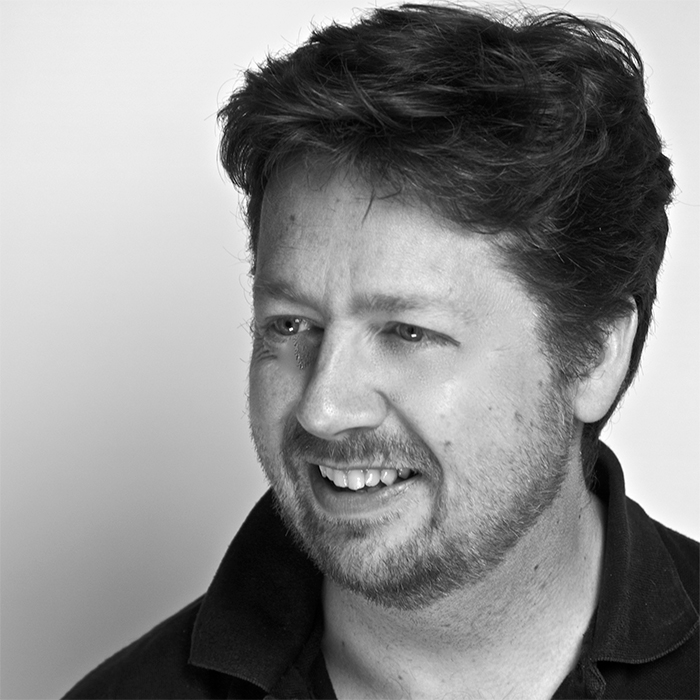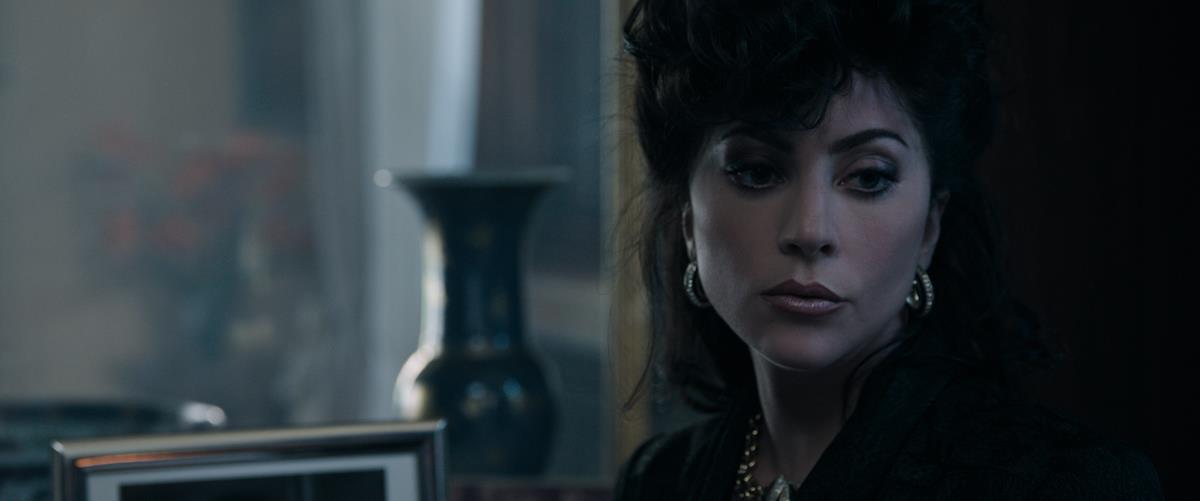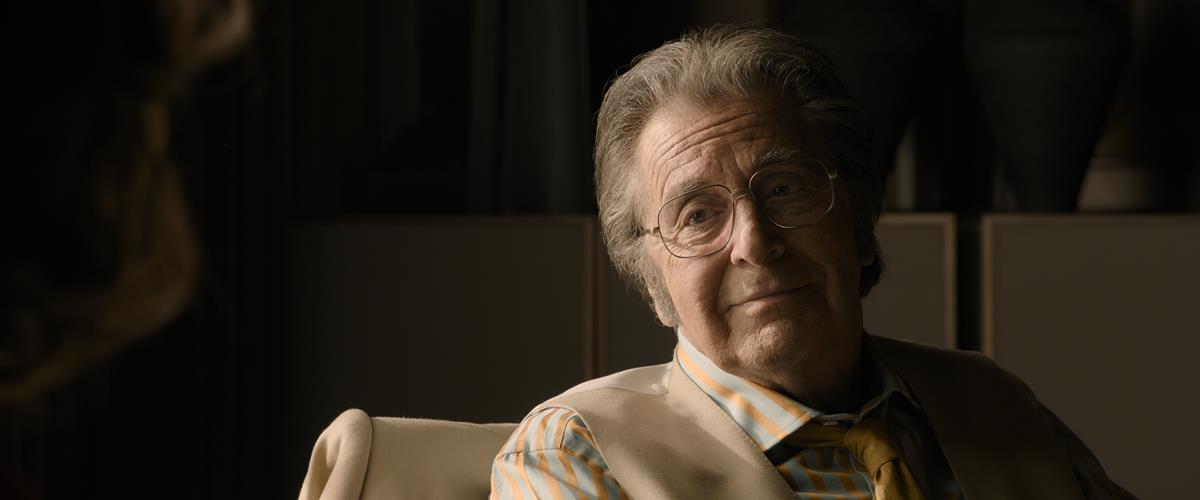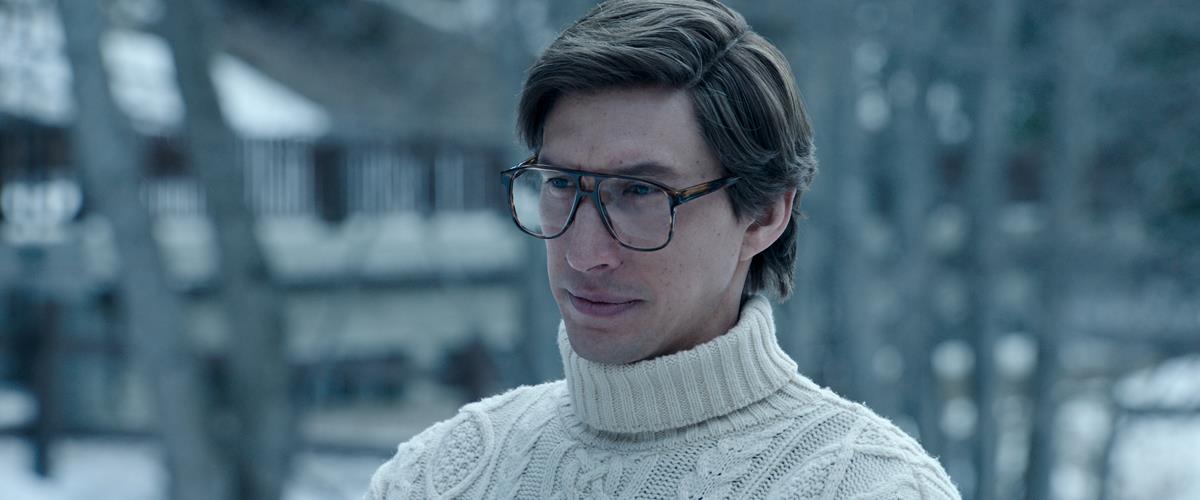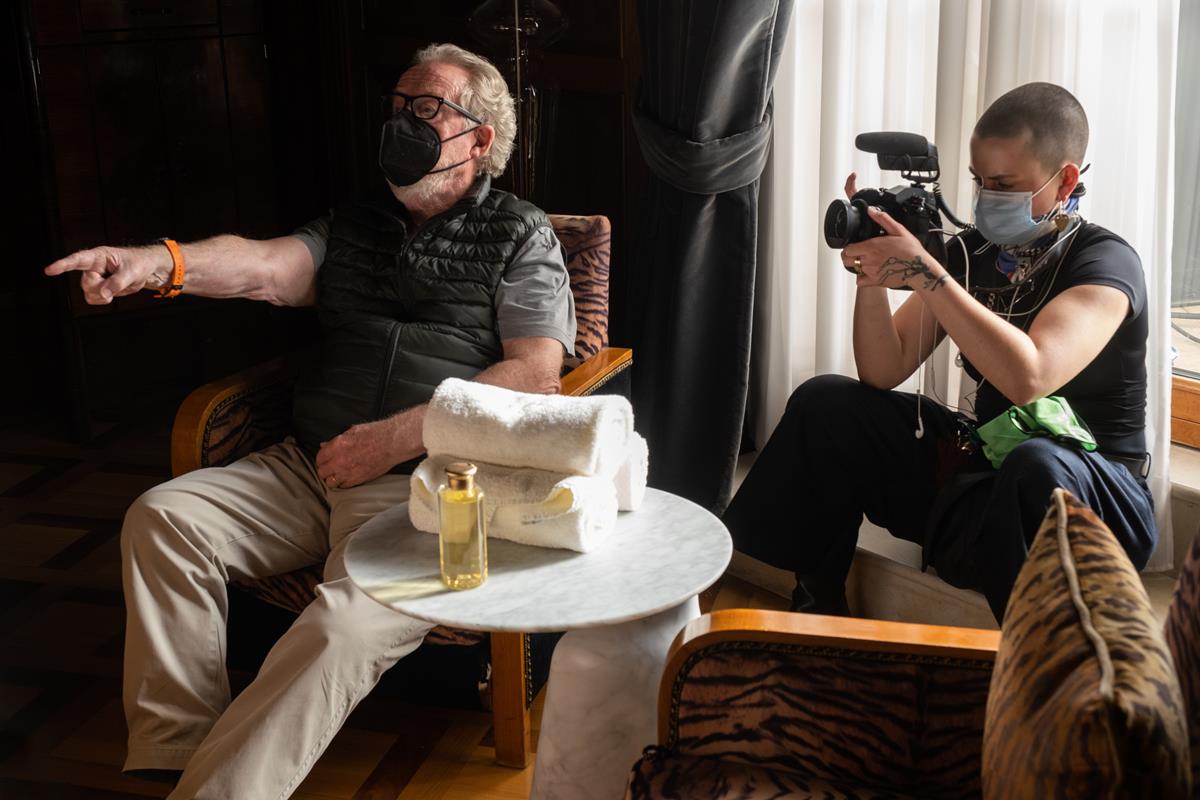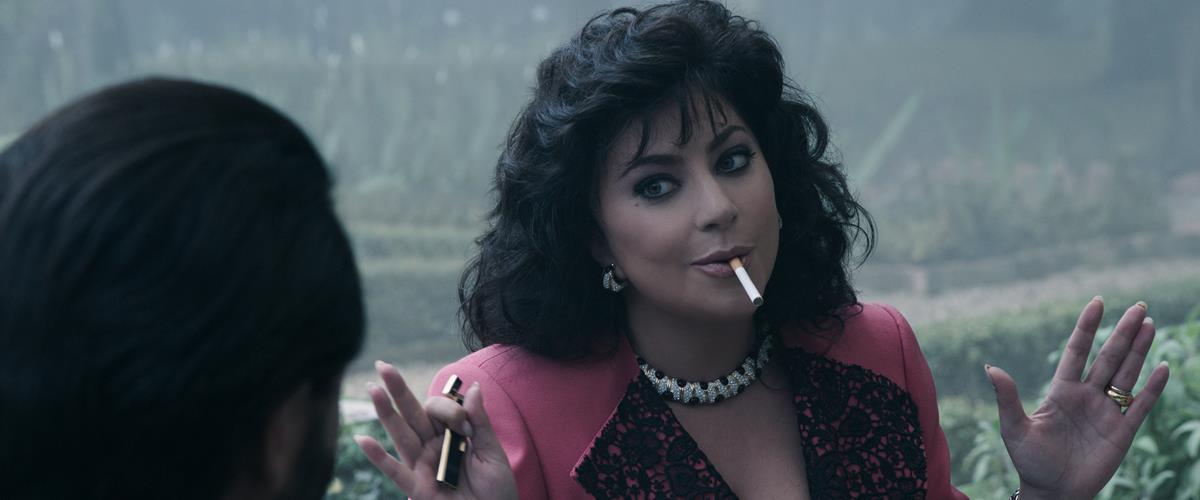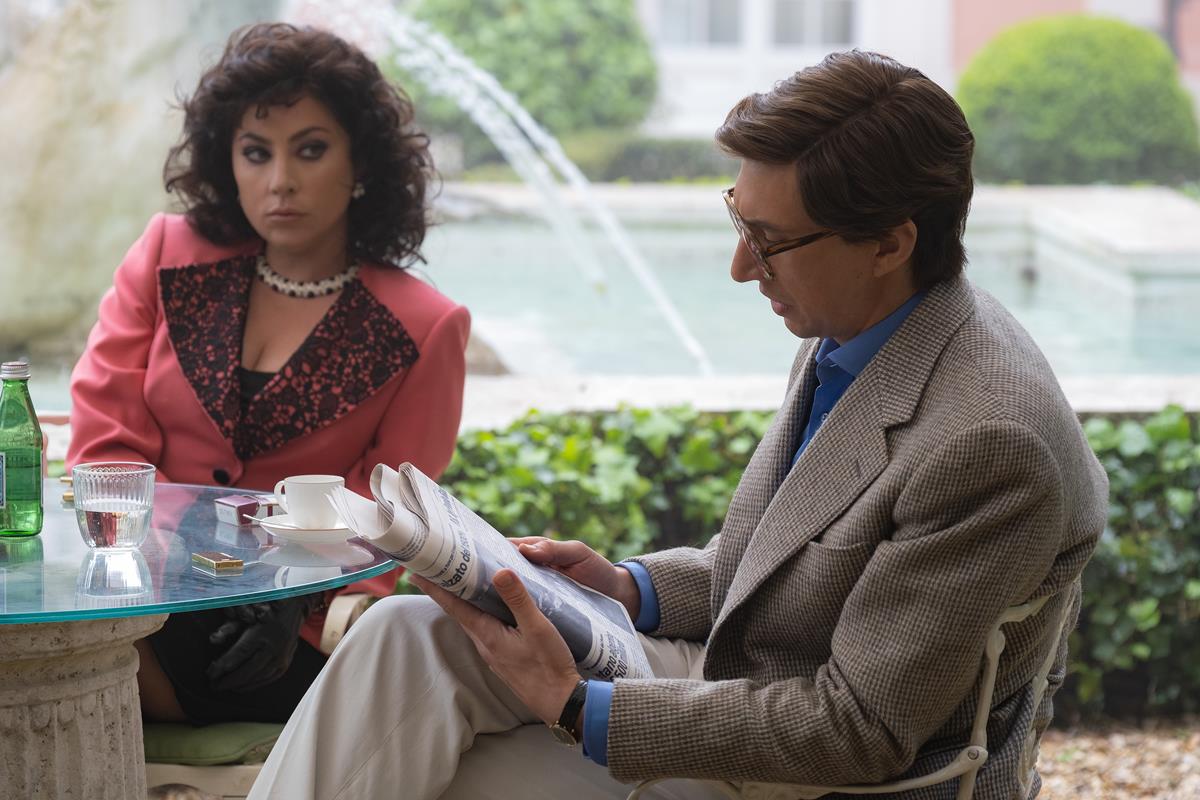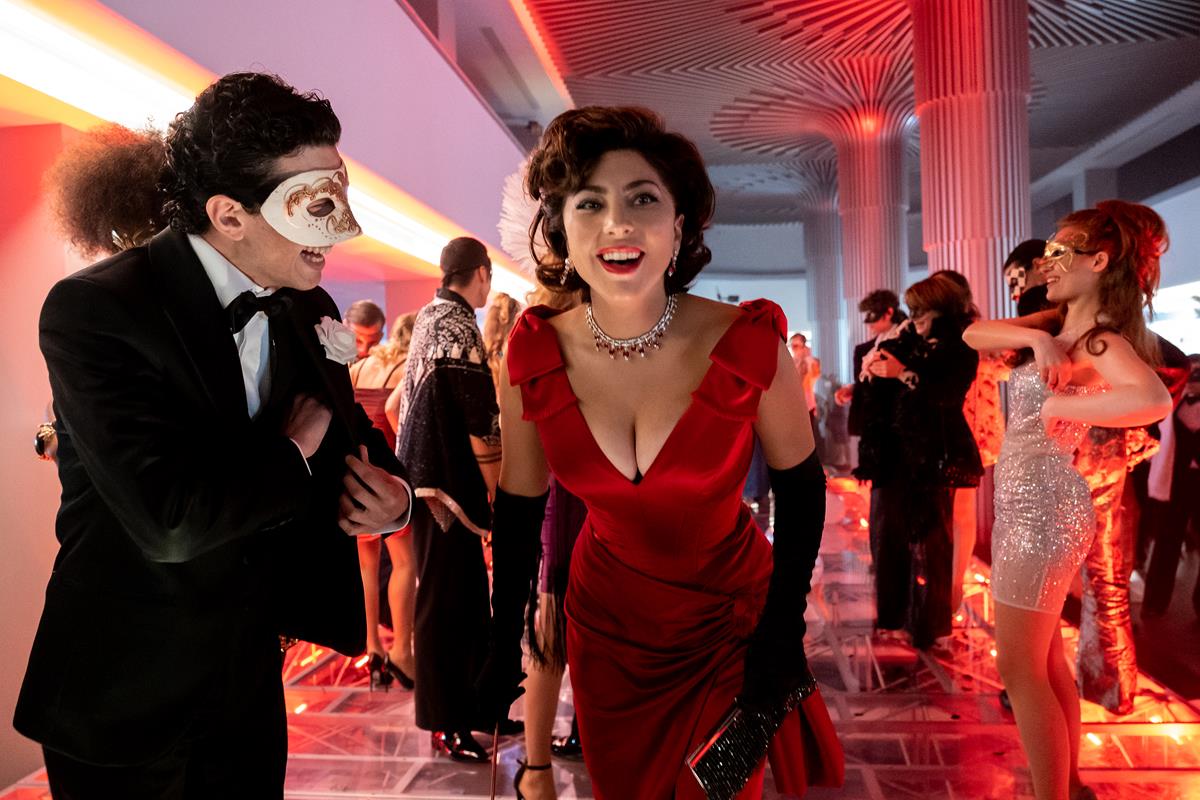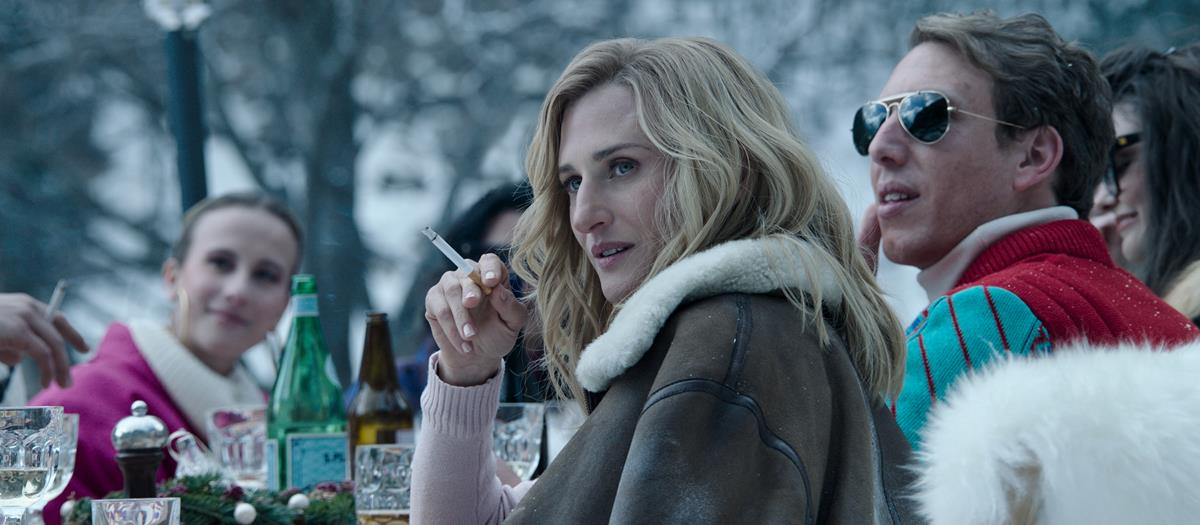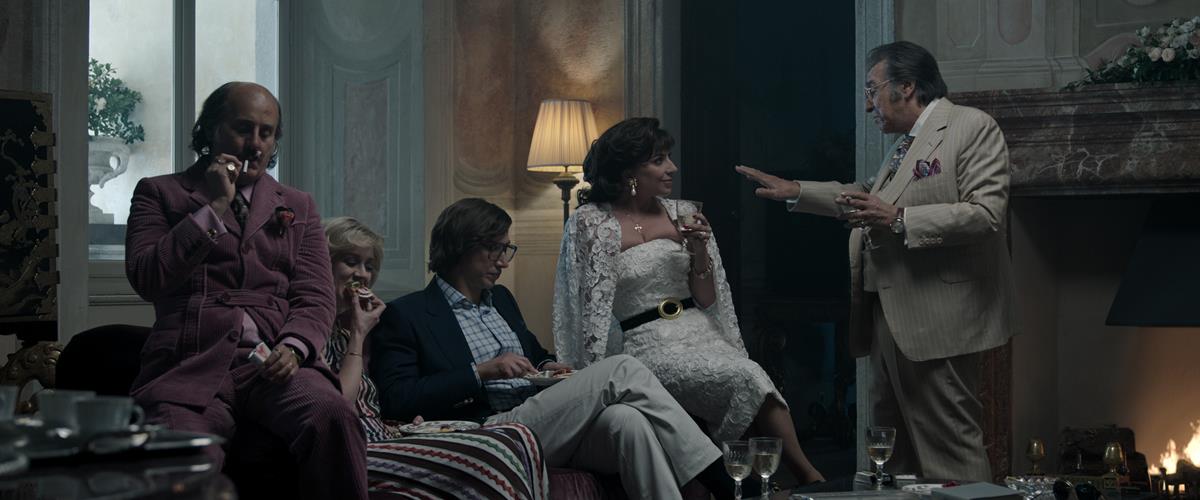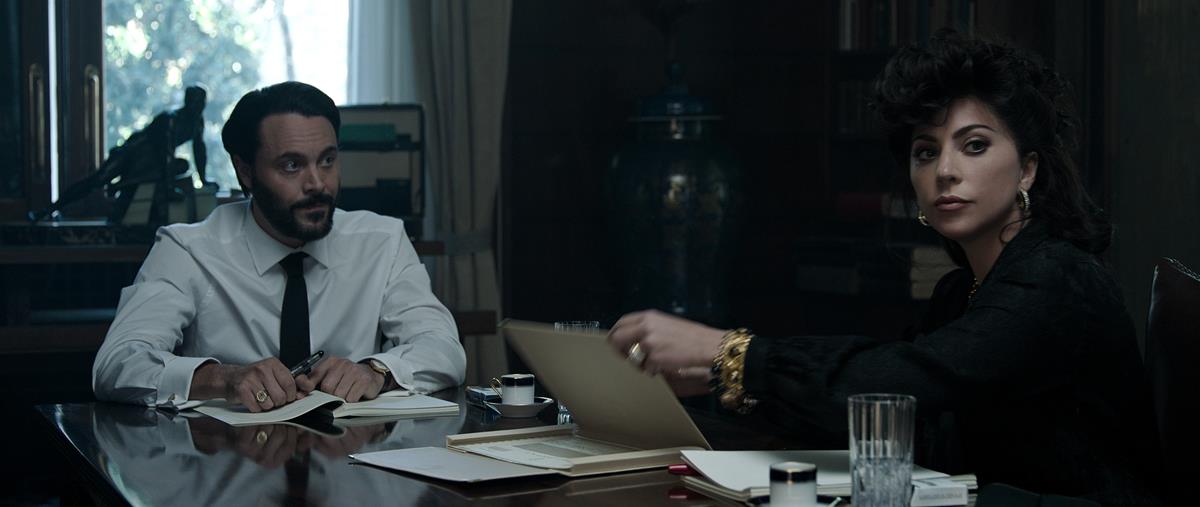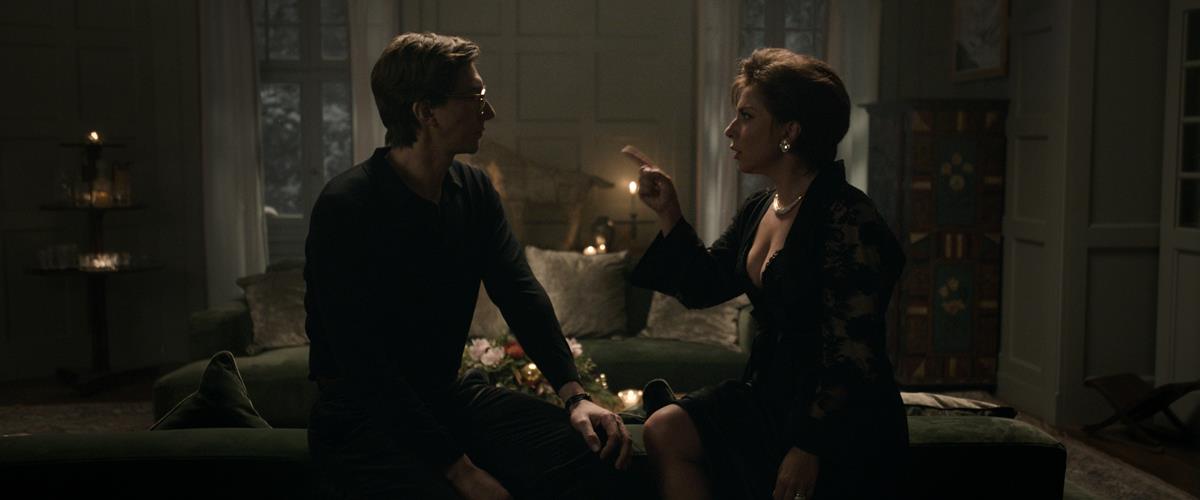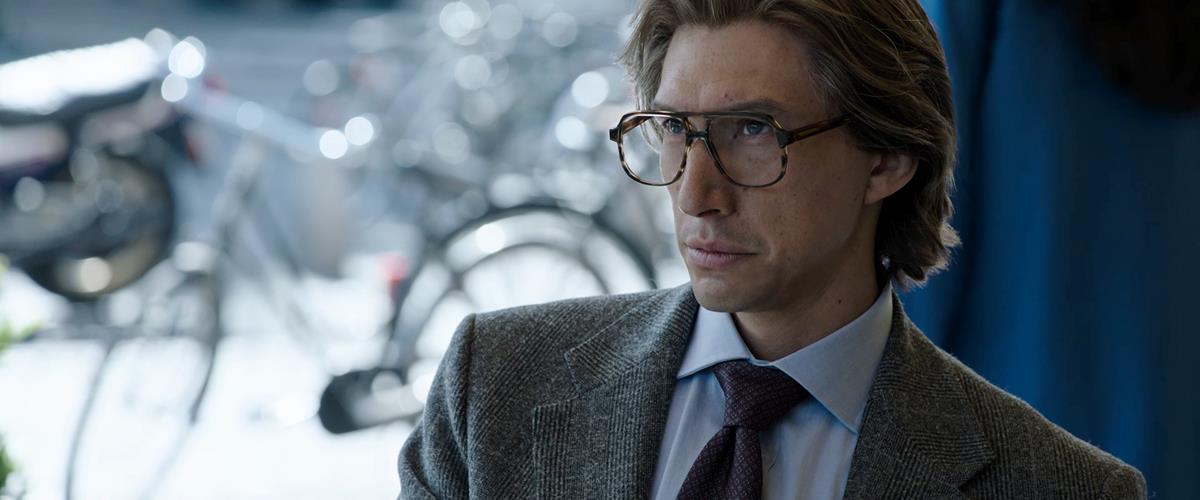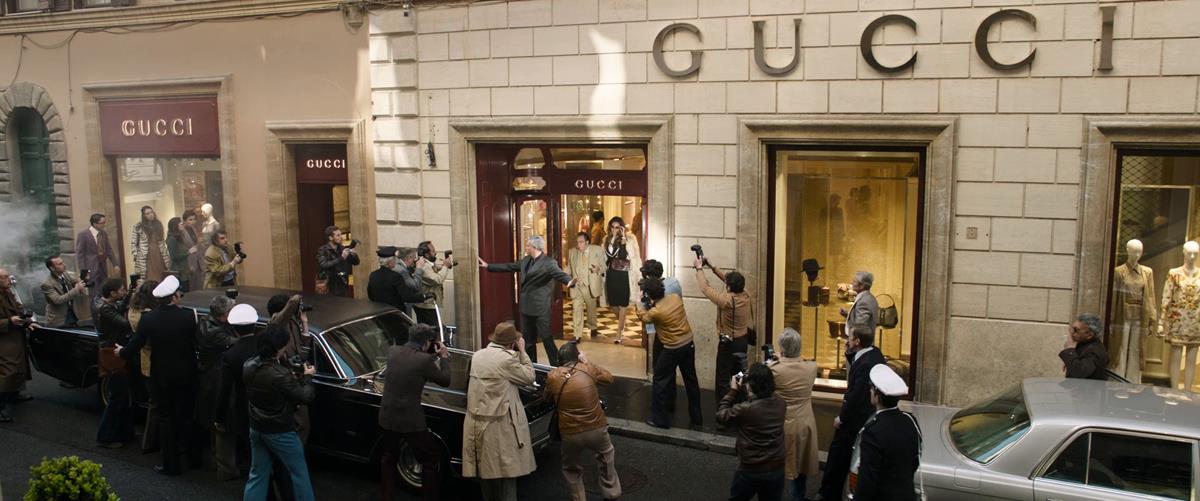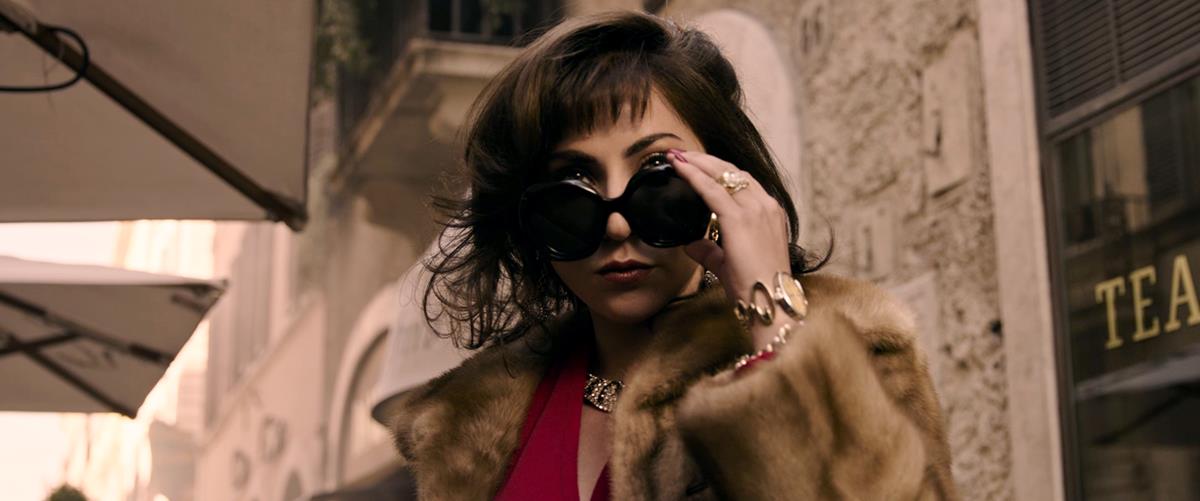
Courtesy of Metro Goldwyn Mayer Pictures Inc.
Shortly after Sara Gay Forden’s The House of Gucci: A Sensational Story of Murder, Madness, Glamour and Greed was published in 2001, Scott Free, the production company of director/producer Ridley Scott, optioned the feature film rights.
Scott explained his interest, “It was a fascinating family history. The Gucci dynasty was almost Italian royalty within the fashion industry and its destruction came from inside the family and spread. How could that not be interesting?”
He is well known for repeat casting, with Russell Crowe appearing in five of Scott’s films, and Michael Fassbender in four. But it was a singer that caught his eye for the role of the intimidating Patrizia Reggiani Gucci, who marries into the family.
“I became curious about Lady Gaga, particularly after I saw A Star Is Born,” Scott told AV Club. “I thought, now here’s a formidable talent — as an entertainer, as a singer, as a producer and the writer of her own show. A real engine of creativity. Then we met and I liked her immediately.”
For Maurizio Gucci, her husband, Scott was again re-casting, this time with Adam Driver. “Well, I was planning Gucci and I was making The Last Duel. I think Adam was literally trying on the chainmail and I said, ‘You know what, I’ve got a screenplay I want you to read this weekend.’ He said, ‘What?’ I said, ‘I’ve got this really interesting role. You may want to do it. I think you should read it.’ And he read it that weekend and said, ‘Damn, okay.’ ”
READ MORE: Ridley Scott on Adam Driver, explosions, and the subjectivity of art (AV Club)
Scott has gotten a fair amount of flack for the casting choices (American actors and Italian accents aren’t the easiest combination to pull off), primarily from armchair experts commenting on House of Gucci trailers, but clip-based initial judgments don’t tell the full story here.
But even telling a compelling story won’t necessarily shield a biopic director from criticism.
BBC News reports that the Gucci family (who have not been associated with the fashion label since the ’90s) “were particularly offended by the depiction of Reggiani” because both the movie and cast members describe her as “a victim trying to survive in a male and male chauvinist corporate culture”
“This couldn’t be further from the truth,” the statement continued, with the family describing the business when they were at the helm as being “an inclusive company” — which they dispute.
LIGHTS, CAMERA, ACTION! SPOTLIGHT ON FILM PRODUCTION:
From the latest advances in virtual production to shooting the perfect oner, filmmakers are continuing to push creative boundaries. Packed with insights from top talents, go behind the scenes of feature film production with these hand-curated articles from the NAB Amplify archives:
- Savage Beauty: Jane Campion Understands “The Power of the Dog”
- Dashboard Confessional: Ryusuke Hamaguchi’s “Drive My Car”
- “Parallel Mothers:” How Pedro Almodóvar Heralds the New Spanish Family
- “The Souvenir Part II:” Portrait of the Artist As a Young Woman
- Life Is a Mess But That’s the Point: Making “The Worst Person in the World”
And for her part, the real-life Reggiani nodded approval at Lady Gaga’s portrayal, although she expressed displeasure that the pop star-turned actress did not come to her “out of respect” before taking on the role.
READ MORE: ‘House of Gucci:’ Family hits out at ‘insulting and painful’ portrayal (BBC)
In a review for Variety, Owen Gleiberman notes that “House of Gucci is modeled fairly directly after The Godfather” — in that both films are explorations “about the way that power actually works: in a business empire, in a family, among people who are supposed to be looking out for each other.”
He draws out the metaphor further: Maurizio Gucci is Michael Corleone, Jared Leto’s Paolo Gucci is House of Gucci‘s Fredo.
(Disclaimer: Gleiberman explicitly says that Scott’s latest film is not in the same league as Coppola’s masterpiece, but he does suggest that it might be his best-executed feature since Gladiator.)
Gleiberman writes, “just because the characters in a drama behave in an over-the-top shameless manner doesn’t mean that the film that’s observing them is over-the-top. House of Gucci is an icepick docudrama that has a great deal of fun with its grand roster of ambitious scoundrels, but it’s never less than a straight-faced and nimbly accomplished movie.”
READ MORE: ‘House of Gucci’ Review: Lady Gaga and Adam Driver Rule in Ridley Scott’s Transfixing Fashion Tabloid ‘Godfather’ (Variety)
Other stars in the hugely star-studded ensemble include Al Pacino, Jeremy Irons and Salma Hayek.
Scott told The New York Times about the COVID shutdown of The Last Duel, which gave him more prep time for House of Gucci.
“My team is the best in the business. I remember I was making the first one [The Last Duel] in a rather beautiful place [in the French countryside], and I’m not a great countryside guy because it’s deep-green and damp and I start thinking about that vodka martini around about three in the afternoon, which is fatal.
“Suddenly, there was this monster coming at us called COVID, so I said, ‘We’re going to close down.’ That helped a lot because it enabled me to edit where I got to, but also to get full prep of two months storyboarding Gucci.”
READ MORE: Lady Gaga and Ridley Scott on ‘House of Gucci’: When Beauty Turns Ugly (The New York Times)
House of Gucci was shot over 43 days and in sequence, mostly in Rome, with additional locations in northern Italy. The production crew was able to finish the movie under budget and a week early, even though they shot the film under COVID restrictions.
A fascinating glimpse into how Scott runs his set sees him using one large monitor and six to eight lower monitors, which enable him to live-edit the movie while he’s shooting it.
Kevin Walsh, one of the film’s producers and president of Scott Free Productions, explains, “It’s a discipline he learned from years of working for the BBC and directing live television. This enables him to complete a scene in one or two takes. Since he uses several cameras, he has all coverage he needs. A boon for the actors, who are not saddled with take after take, which saps their creative energy.”
Observes Jeremy Irons, “Having multiple cameras running all the time, means you don’t have to shoot one way and then have to remember what you were doing when you shoot from a different angle, because the cameras capture the whole scene. When I was playing around in a scene with Al [Pacino], the entire scene was shot. And if we decided to do another take differently, that too was completely shot. This approach was very freeing for an actor.”
One of the keys to Scott’s all-encompassing approach to shooting is forging a successful partnership with Claire Simpson, “the best editor in the business, full stop,” according to the director. “You need someone of that quality and taste. And Claire has the best taste.”
On House of Gucci, as well as their other collaborations, Scott has Simpson cutting the film during production, “Because as I’ve learned again from hard experience, you’ve got to keep yourself clean and fresh. If you sit in the editing room or the mixing room, all you do is get blunt. I always have Claire cutting as I go along because then I know what I have.”
Scott’s vision for the visual style of House Of Gucci, according to production designer Arthur Max, “was one of elegance and luxury. The best of the best. A world of privilege with no expense spared — but on a budget and on schedule.”
The main locations in the script for House of Gucci are in Rome, Milan, New York and northern Italy’s Alpine country, though, in actuality most of the film was shot in and around the Italian capital with interiors at the famed Cinecitta Studios.
In addition, the production shot some exteriors and interiors in Milan, including one scene that is designed to look like downtown Manhattan. The production also filmed at a villa near Lake Como. Italy’s Dolomite mountain range stood in for the Alps, where the Gucci family spent their winter vacations.
But the House of Gucci press junket made headlines for other reasons than the cast, crew and look of the film as it caught up with the 83-year-old legend of cinema and his unguarded thoughts on films and critics. Asked how he felt about the box office underperformance of The Last Duel, Scott commented, “It was exceedingly disappointing. The fatal thing is when you think you’ve got it, you haven’t — I thought I’d got it on Blade Runner and I hadn’t! I was crucified by a big critic at the time called Pauline Kael. It’s why I never read critiques, ever.
“You have to be your own decider — if you worry about what the audience is thinking and what they may want, that’s fatal. A good film will find itself, and now Blade Runner is in the Library of Congress.”

